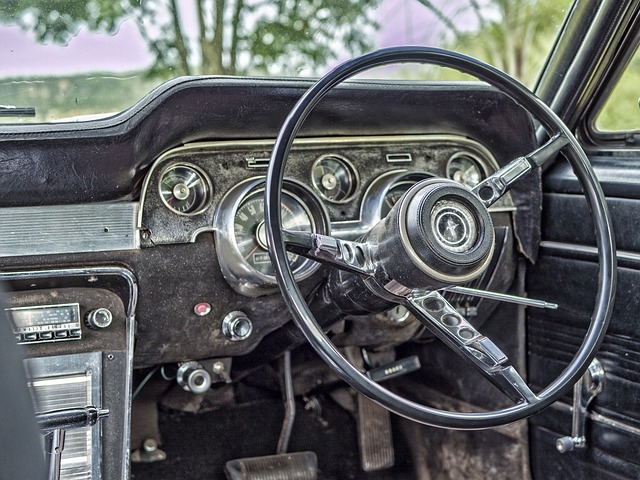Looking to register your car in California? This guide breaks down the process step-by-step. First, understand the basic requirements for car registration in the Golden State, including necessary documents for a Vehicle Identification Number (VIN) verification. Next, conduct a vehicle history report and VIN check. You can visit a local DMV office or use online services. Finally, pay the registration fees and receive your license plate. Remember, a successful VIN verification is key to a smooth process.
- Understand the Requirements for Car Registration in California
- Gather Necessary Documents for VIN Verification
- Conduct a Vehicle History Report and VIN Check
- Visit a California DMV Office or Use an Online Service
- Pay the Registration Fees and Receive Your License Plate
Understand the Requirements for Car Registration in California

Before registering your car in California, it’s crucial to understand the state’s requirements. One key step involves verifying the vehicle’s unique identifier—the Vehicle Identification Number (VIN). This 17-character code is essential for car registration and serves as a digital fingerprint for your vehicle, ensuring authenticity and helping to prevent fraud. In California, VIN verification is typically done through a formal inspection process by a designated DMV agent or an approved mobile vin verifier.
Additionally, you’ll need to provide proof of insurance, complete necessary paperwork, and pay the associated fees. A mobile vin inspection can streamline this process by allowing for on-site VIN verification, making it convenient during the registration procedure. This ensures that your car meets all legal standards before being officially added to California’s vehicle registry.
Gather Necessary Documents for VIN Verification

To register your car in California, you’ll need to go through a process known as VIN verification. Before you begin, ensure you have all the necessary documents. The primary piece is the Vehicle Identification Number (VIN) label, which can usually be found on the vehicle’s front or rear end, or inside the driver’s side door frame. Additionally, your proof of ownership, such as a title or bill of sale, and current registration (if applicable) from another state will be required.
For a hassle-free process, consider using services like a mobile vin inspection or a mobile vin verifier. These options allow you to have the VIN verification done quickly and conveniently at your location, saving you time and effort. Having these documents in order ensures a smooth transition during registration, as it’s an essential step in California car registration requirements.
Conduct a Vehicle History Report and VIN Check

Before registering your car in California, it’s crucial to conduct a thorough check on its history. One essential step is to perform a Vehicle History Report (VHR) and a VIN (Vehicle Identification Number) check. This process involves using reliable services like a mobile vin verifier to gather detailed information about the vehicle’s past, including any accidents, outstanding liens, or odometer rollback issues.
A mobile vin verification service can provide quick and convenient access to this data. By inputting your VIN into their system, you gain instant insights into the car’s maintenance records, ownership history, and potential red flags. This step is vital in ensuring that you’re making an informed decision when registering a used vehicle and helping you avoid any legal complications down the line.
Visit a California DMV Office or Use an Online Service

You have two main options when it comes to registering your car in California: visit a local DMV office or use an online service. If you prefer a traditional approach, heading to a California Department of Motor Vehicles (DMV) office is still a viable option. You’ll need to gather essential documents and fees before your visit. One important step is the VIN verification process, which ensures the vehicle’s identity and history are accurately checked.
For those who prefer convenience or have busy schedules, many services now offer mobile VIN verification options. This allows you to get the necessary information from a licensed professional at your location, eliminating the need to travel. By utilizing these modern alternatives, registering your car becomes more accessible and efficient, ensuring compliance with California’s requirements while saving you time.
Pay the Registration Fees and Receive Your License Plate

After completing your vehicle’s registration application, it’s time to pay the associated fees. These costs cover various aspects of car registration, including state taxes and administrative charges. You can typically pay using a credit card or check at the DMV or online through their secure portal. Once your payment is processed, you will receive your license plate. This crucial step finalizes your vehicle’s registration process, allowing you to legally drive on California roads.
Remember, before registering, ensuring your vehicle passes all necessary inspections is vital, including a Vehicle Identification Number (VIN) verification. You can opt for a mobile VIN verifier or perform a self-inspection to ensure your car meets the state’s safety and emissions standards. This step guarantees that your vehicle is safe and roadworthy, making it easier to complete the registration process.
Registering a car in California involves several straightforward steps, from understanding the requirements to conducting a VIN verification. Ensure you have all necessary documents ready for a smooth process. Whether you visit a DMV office or use online services, both options offer efficient ways to complete the registration. After paying the fees, you’ll receive your license plate, marking the successful conclusion of your car registration journey in California.



